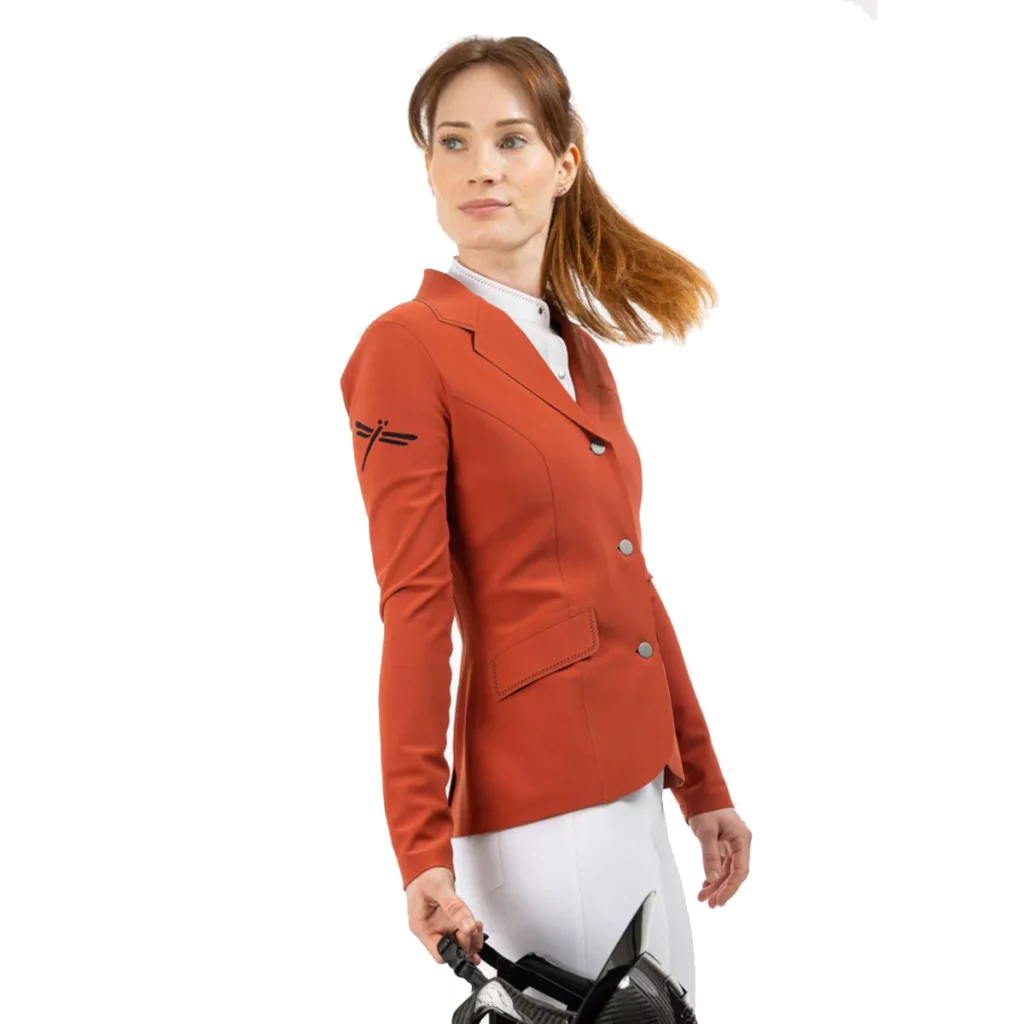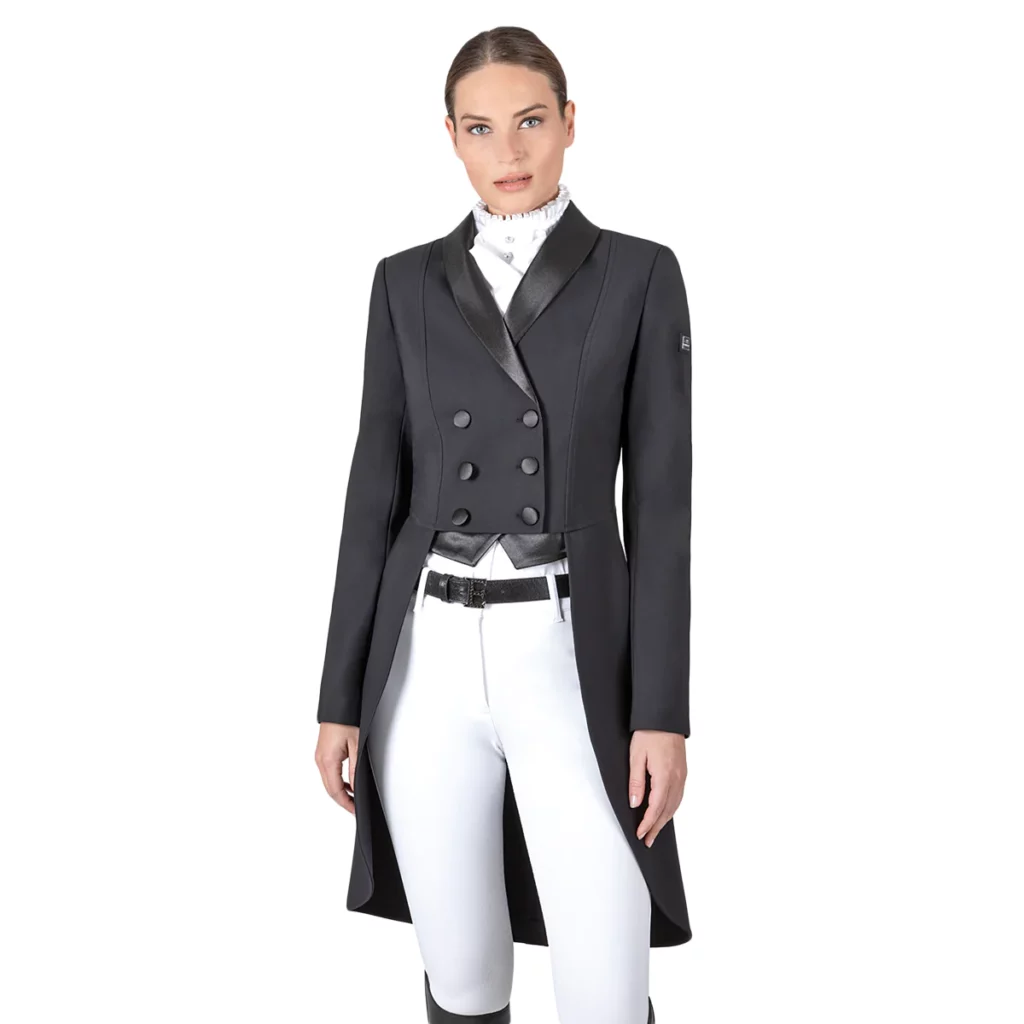
Navigating Show Dress Codes: From Schooling to Competitions
Michelle DrumUnderstanding the nuances of dress codes is essential for creating a polished impression in any equestrian event. But it’s not all about looks–wearing the proper attire during a horse show can keep you safe and help you perform your best. In this guide, we’ll take you through the basics of equestrian attire, from casual schooling outfits to the formal dress requirements of competitive events. After reading, you’ll be ready to take on your next horse show in style.
Why is wearing the right riding apparel so important for competitions?
Wearing the right equestrian apparel isn’t just about fashion—it’s about safety, comfort, tradition, functionality, and professionalism, all contributing to a positive and successful riding experience, regardless of your chosen discipline.
Many equestrian disciplines have specific traditions and dress codes that are important to uphold. Wearing the correct attire shows respect for the sport, its history, and its culture. However, it’s not all for show. Equestrian apparel is designed to boost your performance and help you endure the rigors of competition riding.
Riding requires precise movements and balance, which can be significantly improved with apparel designed to enhance comfort and mobility. Clothing designed specifically for riding includes stretch fabrics and reinforced seams for freedom of movement and greater durability. Other features, like knee-patch and full-seat breeches, help boost your performance and provide better contact in the saddle in show jumping and dressage.
Different disciplines have unique requirements for apparel regarding functionality. For example, dressage riders typically wear breeches and tall boots to provide close contact with the horse and allow for subtle communication through leg aids. In contrast, eventers may wear cross-country vests and attire designed to withstand the rigors of the cross-country phase.
Universal horse show dress codes
Clothing rules for equestrian competitions vary depending on the discipline and the level of competition, but they generally follow the same principles. Here are a few universal rules and guidelines for equestrian show apparel.
Safety gear
The most important rule in any competition is to wear the appropriate safety gear. This includes a well-fitted helmet that meets safety standards, including ASTM/SEI certification. Some disciplines, like show jumping and cross country, also require additional safety equipment, like body protectors or vests, for certain phases of competition.
Conservative attire
Traditional and conservative attire is favored in most equestrian competitions. This often includes a collared shirt or show jacket, breeches or jodhpurs for children, and tall boots or paddock boots with half chaps. The colors are usually subdued, such as black, navy, or beige.
Gloves
Gloves are commonly worn during equestrian competitions. Gloves serve a dual purpose by providing a better grip on the reins and protecting your hands from the sun and wear.
Learn more: 9 Best Horse Riding Gloves
Jewelry and accessories
Avoid excessive jewelry or accessories since they can be distracting and potentially dangerous. Small stud earrings are generally acceptable, but dangling earrings or large necklaces are not.
Schooling outfits

Schooling is far less formal than official equestrian competitions. As such, the dress code is more relaxed. Here are some of the hallmarks of a schooling outfit.
Breeches or riding tights
You should always wear breeches or riding tights during equestrian endeavors– schooling is no exception. These riding pants protect riders’ legs from chafing, provide freedom of movement, and help wick away sweat for better seat-to-saddle contact.
Riding shirt or polo
A moisture-wicking riding shirt or polo shirt is ideal for schooling because it provides comfort and breathability while training. The shirt should allow freedom of movement and suit riding in various weather conditions. Sun shirts feature UPF sun protection and are commonly worn in the summer to help keep riders cool.
Show jumping and hunter-jumper outfits

While show jumping and hunter-jumper competitions share some similarities, there are differences in the attire typically worn for each discipline. We’ll highlight the differences below.
Show jacket
Unless the competition calls for formal attire, riders can incorporate bold-colored show coats, show shirts, and apparel with crystals and sparkles. The main rule is no large brand logos.
In formal show jumping, show jackets are often conservative in color, such as navy blue, black, or dark green. The jacket should be well-fitted and tailored, allowing freedom of movement while maintaining a polished appearance.
Hunter jackets have a more classic and understated look than show jumping jackets. These jackets are almost always dark in color, usually black, gray, green, or navy. Some hunter jackets also feature patterns like plaid or pinstripes, though solid-color jackets are always classic.
Show shirt
Underneath the show jacket, riders typically wear a long-sleeved or short-sleeved show shirt. Show shirts are usually white or a light pastel color and sometimes feature subtle detailing such as a contrasting collar or cuffs.
Show jumping riders can have more freedom in shirt styles compared to the traditional white or pastel show shirts worn in the hunter ring. While white or light-colored shirts are still typical in show jumping, riders can choose shirts with more modern designs, subtle patterns, or technical fabrics for improved breathability and moisture-wicking properties.
Learn more: The Ultimate Guide to Show Shirts
Tie or stock tie
In formal show jumping and hunter-jumper competitions, riders typically wear a stock tie or choker-style collar with their show shirt and jacket. Stock ties are usually white and can be held in place with a gold or silver pin. Learn how to tie a stock tie.
In the past, equestrian apparel brands were used to create show shirts with detachable collars for more versatility. Over the last few years, the detachable collars have been ditched for ‘snap collar’ shirts where the collar and choker are one piece and simply snap closed.
Breeches
Show jumping attire often allows for more flexibility in breeches color compared to the strict preference for beige or light-colored breeches in the hunter ring. While beige or tan breeches are still common in show jumping, riders may opt for darker colors, such as gray or navy, depending on personal preference and competition rules. Show jumping and hunter breeches typically feature suede or silicone knee-patch es for greater control during jumps and obstacles.
Boots
Field riding boots are a staple of equestrian attire commonly worn in show jumping. These boots are tall, covering the entire calf, and typically feature laces near the ankle to allow for a more secure fit. Dress boots are also commonly worn by equitation and hunter riders. No matter the style, the boots need a defined heel to prevent the boot from slipping through the stirrups in case of a fall. Boots can be black or brown and should be polished and well-maintained for competition.
Dressage outfits

Dressage riding has a long history, and its outfits reflect that adherence to tradition, focusing on style, elegance, and function. Here are the most common features of a typical dressage outfit.
Dressage jacket
Dressage riders typically wear a formal dressage jacket during competitions. The black or navy blue jacket may have satin lapels and buttons for a polished look. Dressage riders can wear a shadbelly at higher levels to signify their skills and reputation.
Dressage shirt
Underneath the dressage coat, riders wear a long-sleeved or short-sleeved show shirt. Dressage shirts are typically white or light pastel, sometimes with a high collar and decorative detailing.
Stock ties
Dressage events require stock ties. Ties can be any color, though white is most common.
Breeches
Dressage riders typically wear white or neutral-colored breeches during competitions. Full-seat breeches are popular because they allow for closer contact and greater control in the saddle. These breeches feature silicone or suede patches on the seat and inner leg for improved grip.
Boots
Tall riding boots with a distinguishable heel are required in dressage competitions. Where field boots feature laces, dressage boots usually only have a zipper closure. Tall riding boots for dressage are typically black or brown leather and reach just below the knee.
The right competition apparel adheres to tradition and helps keep you safe and perform well in the saddle. That’s why you should always invest in high-quality equestrian apparel. At the Farm House, we’re proud to offer only the best brands to passionate equestrians like us. Browse our extensive selection of English riding apparel today to find your next show outfit!
- Shop breeches →
- Shop show jackets →
- Shop show shirts →
- Shop riding boots →
You might also like:
